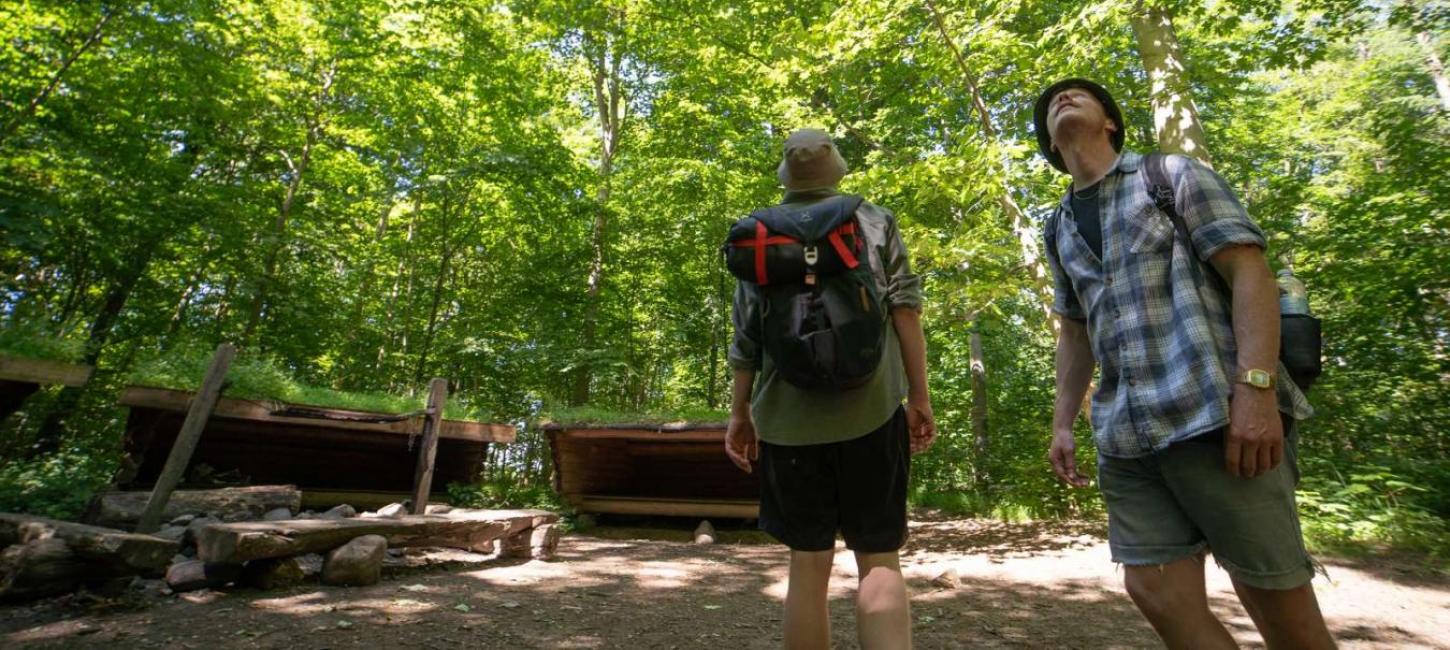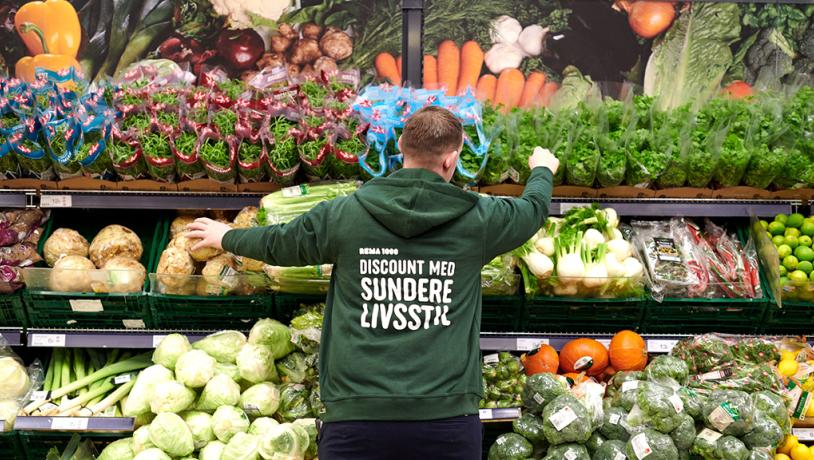Eventyrsport Horsens
Visit this big outdoor store and find the clothing and equipment for your next outdoor experience. Adventure Sport has a big selection of quality brands, equipment for numerous activities, and clothing for all four seasons.

The Coastal Land has many beautiful, signposted hikes through varied countryside, but the route is the not be all and end all when you go on holiday on foot. The hiking holiday is a holistic experience with accommodation, experiences, etc. Here we advise you about everything for the hike.
The Coastal Land offers great hikes by fjords, coasts, islands, forests, meadows and towns. The infrastructure is top notch - the routes are signposted and you can easily get back and forth between the routes. Even though you are in the middle of rural countryside, you are not far from experiences, shopping and town life. Here, the wild, primitive nature experiences and pleasant comfort are always within reach.
New bag, hiking boots, thermos flask, waterproof cape or field rations? You can get all the gear you need at some of Denmark’s largest outdoor shops. The staff are ready to advise you on the right purchase.
No! You can come as you are in nature. Some people are happier with all the “right” gear, while others are fine with a worn pair of running shoes and a plastic bag from the local supermarket in hand.
If you are going to hike far - and for many days - you should at least have a comfortable and roomy backpack for your stuff and a good pair of hiking shoes/boots.
Yes!
It’s always a good idea to train some kilometres before setting off on a big hike over several days. You will use muscles you are not used to, which can make your legs ache and sore. However, the biggest challenge is actually your skin. If you are not used to walking long distances, you may get blisters that can potentially make the hike quite uncomfortable if you are not prepared. We recommend that you do a handful of walks of the distance you will be doing daily on the hiking holiday. And remember that on the hiking holiday, you have a full backpack, so make sure you carry weight when you are out “training”.
And if you are not used to walking, suitable footwear is even more important. Choose hiking boots over hiking shoes as they provide better protection for tired feet against twists and sprains. Carry plenty of socks on your trip, and make sure you change them regularly. And if your feet get wet on the way, make sure you change your socks to avoid blisters.
If you are going out with a group that might be a bit more hardcore than you and used to hiking in the wilderness for days on end, you don’t want to be the one holding the others back. With a little training, suitable footwear and a blister plaster in your bag, you’re on your way.
A combination of these is ideal.
It’s a good idea to always have a backup in your bag in case you get hungry. Muesli bars, long-life bread, tinned food, fruit and snacks (be aware that chocolate melts in the heat) are good to have on hand when you need to replenish your energy stores.
Some choose to add a daily supermarket visit to the route and visit a local place to eat in the evening. That way, you only have to concentrate on getting the fast carbs in your bag.
It’s also possible to cook outdoors at the area’s nature campsites. In this case, you must bring dried ready meals and cooking equipment.
And remember to fill up your water bottles before you leave! Fluid requirements vary from person to person and depend on the weather, but a basic rule is to carry one litre of fluid for 10 kilometres of walking.
A sleeping bag, sleeping mat and toilet paper are a must, and possibly a tent if you aren’t sleeping in a shelter.
If you are cooking at the campsite, you will need a Trangia set or at least a pot or pan. Don’t forget matches or a lighter, cutlery and a plate. One often overlooked thing is washing-up liquid for cleaning after the meal.
Food for the trip can usefully be freeze-dried dishes. Supermarkets now have a good selection, but there are also dishes (field rations) designed for the outdoors that can be bought in outdoor shops.
Should your backpack be filled up with snacks, carbohydrates, drinks or maybe the toothpaste that you forgot to bring to the Coastal Land? No matter where you are in the Coastal Land, you are always close to a supermarket, a convenience store or a hypermarket.

Is there a stretch you would like to skip? Or are you falling behind in the schedule? Public transport is your friend in the Coastal Land. Trains, light rail, regional buses and town buses are ready to take you around the area. All towns are connected by bus or train lines. Check the timetables on Rejseplanen to see when you can leave.
You can easily live off muesli bars, fruit, crispbread and powdered food on the trip, but after a long day in your hiking boots, you deserve a good, hearty meal. Fortunately, the area has many good restaurants, cafes and takeaway options.
It’s important to get a good night’s sleep between hikes. Some find peace in the open air under the stars of the night sky. Others would rather enjoy the comfort of a hotel with warm duvets and breakfast before departure. Yes, that’s how we are so different. And you are no less “outdoorsy” because you want to be inside in the evening and enjoy a little pampering. After all, it’s a holiday. Your holiday - your terms.
We can’t avoid the fact that the choice of hiking route is a pretty important detail for your hiking holiday. We suggest variation - here the Coastal Land is stronger than anywhere else in Denmark. For example, take one day at Søhøjlandet’s hilly forest landscape, one in the East Jutland Archipelago, one by Horsens Fjord, one along the river Gudenå by Denmark’s largest marshland, one by the high slopes along Vejle Fjord and one in the beautiful summer countryside by the East Jutland beaches. We hold your hand and guide you in your choice of hiking route.